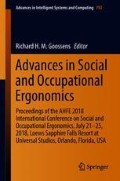Abstract
The aim of this study was to determine an appropriate range of negative pressure to ensure the treatment effect of cupping. Twenty healthy participants were enrolled to receive classic dry cupping treatments at three different pressure intensities (−100, −300, or −500 mmHg) for 10 min each. Heart rate variability (HRV) was measured before, during, and 10 min after cupping to assess changes in autonomic activity. Repeated measure ANOVA was used to analyze differences. Cupping at a pressure of −100 mmHg did not significantly change the HRV, but cupping at both −300 and −500 mmHg caused a significant improvement in HRV. The HRV responses did not differ significantly between cupping at −300 and at −500 mmHg, however. The significant increase in HRV occurred only during the recovery period after the cups were removed.
Access this chapter
Tax calculation will be finalised at checkout
Purchases are for personal use only
References
Rozenfeld, E., Kalichman, L.: New is the well-forgotten old: the use of dry cupping in musculoskeletal medicine. J. Bodywork Mov. Ther. 20(1), 173–178 (2016)
Chirali, I.Z.: Traditional Chinese Medicine Cupping Therapy. Elsevier Health Sciences, London (2014)
Kose, A.A., Karabağli, Y., Cetin, C.: An unusual cause of burns due to cupping: complication of a folk medicine remedy. Burns 32(1), 126–127 (2006)
Klemparskaya, N., et al.: Immunomodulating effect of autohaemotherapy (a literature review). J. Hyg. Epidemiol. Microbiol. Immunol. 30(3), 331–336 (1985)
Musial, F., Spohn, D., Rolke, R.: Naturopathic reflex therapies for the treatment of chronic back and neck pain-part 1: neurobiological foundations. Complement. Med. Res. 20(3), 219–224 (2013)
Arslan, M., et al.: Wet cupping therapy restores sympathovagal imbalances in cardiac rhythm. J. Altern. Complement. Med. 20(4), 318–321 (2014)
Yoo, S.S., Tausk, F.: Cupping: east meets west. Int. J. Dermatol. 43(9), 664–665 (2004)
Kouskoukis, C.E., Leider, M.: Cupping: the art and the value. Am. J. Dermatopathol. 5(3), 235–240 (1983)
Stein, P., Kleiger, R.: Insights from the study of heart rate variability. Ann. Rev. Med. 50, 249 (1999)
Shekarforoush, S., et al.: Cardiac effects of cupping: myocardial infarction, arrhythmias, heart rate and mean arterial blood pressure in the rat heart. Chin. J. Physiol. 55(4), 253–258 (2012)
Zhao, X., et al.: Effect of time and pressure factors on the cupping mark color. Zhongguo Zhen Jiu = Chin. Acupunct. Moxibustion 29(5), 385–388 (2009)
El Sayed, S.M., et al.: Percutaneous excretion of iron and ferritin (through Al-hijamah) as a novel treatment for iron overload in beta-thalassemia major, hemochromatosis and sideroblastic anemia. Med. Hypotheses 83(2), 238–246 (2014)
Kuo, T.B., et al.: Effect of aging on gender differences in neural control of heart rate. Am. J. Physiol. Heart Circ. Physiol. 277(6), H2233–H2239 (1999)
Chen, C.L., et al.: Immediate effects of smoking on cardiorespiratory responses during dynamic exercise: arm vs. leg ergometry. Front. Physiol. 6, 376 (2015)
Chen, C.L., et al.: The effects of cupping therapy on reducing fatigue of upper extremity muscles—a pilot study. In: International Conference on Applied Human Factors and Ergonomics. Springer (2017)
Task Force of the European Society of Cardiology: Heart rate variability standards of measurement, physiological interpretation, and clinical use. Eur. Heart J. 17, 354–381 (1996)
Acknowledgments
We are grateful for the Ministry of Science and Technology of the Republic of China for financially supporting this research under contracts MOST 106-2314-B-214-004 and 106-2813-C-214-030-B.
Author information
Authors and Affiliations
Corresponding author
Editor information
Editors and Affiliations
Rights and permissions
Copyright information
© 2019 Springer International Publishing AG, part of Springer Nature
About this paper
Cite this paper
Tang, JS., Lung, CW., Lee, FH., Chuang, CC., Liau, BY., Chen, CL. (2019). The Influence of Dry Cupping of Differing Intensities on Heart Rate Variability. In: Goossens, R. (eds) Advances in Social and Occupational Ergonomics. AHFE 2018. Advances in Intelligent Systems and Computing, vol 792. Springer, Cham. https://doi.org/10.1007/978-3-319-94000-7_32
Download citation
DOI: https://doi.org/10.1007/978-3-319-94000-7_32
Published:
Publisher Name: Springer, Cham
Print ISBN: 978-3-319-93999-5
Online ISBN: 978-3-319-94000-7
eBook Packages: EngineeringEngineering (R0)

